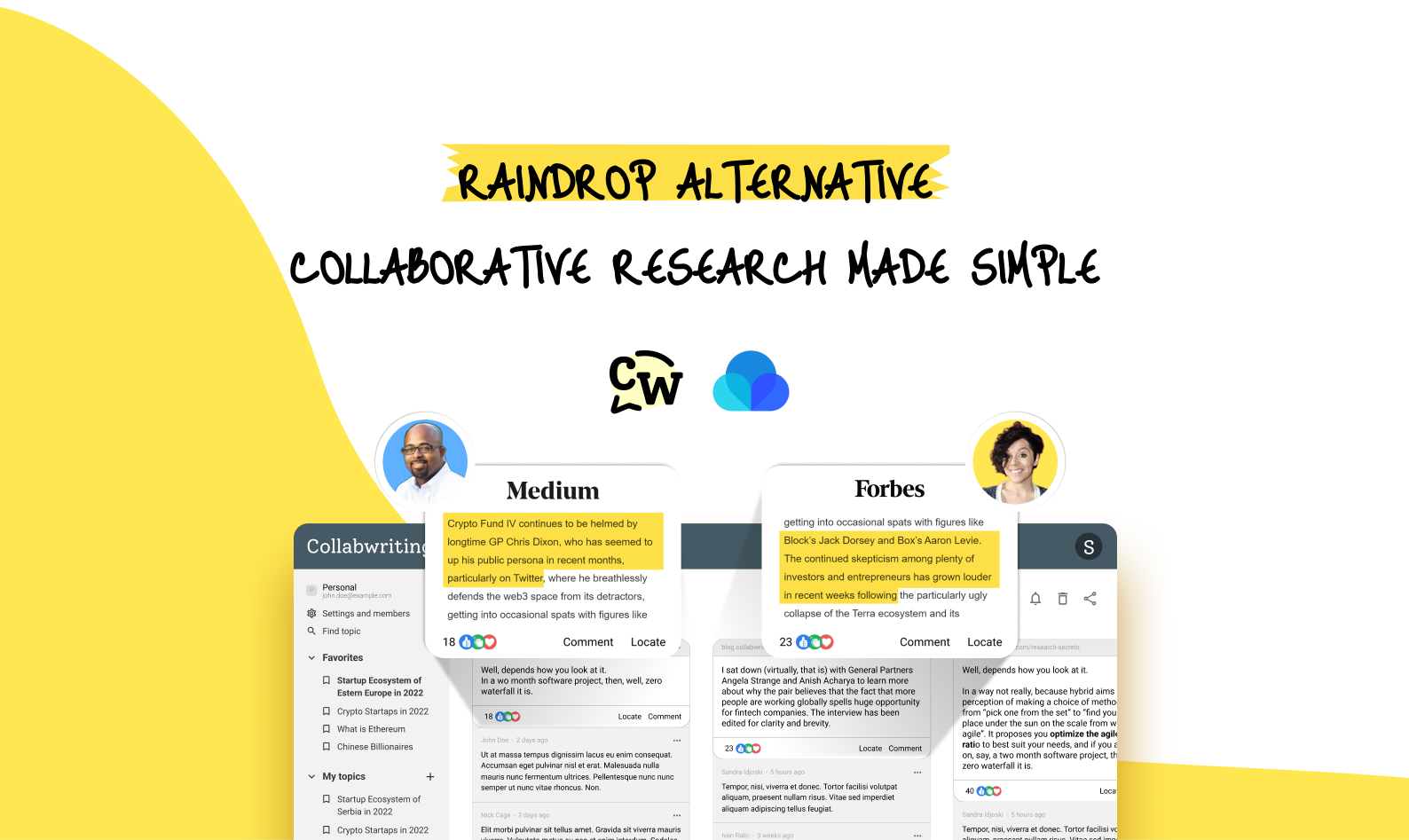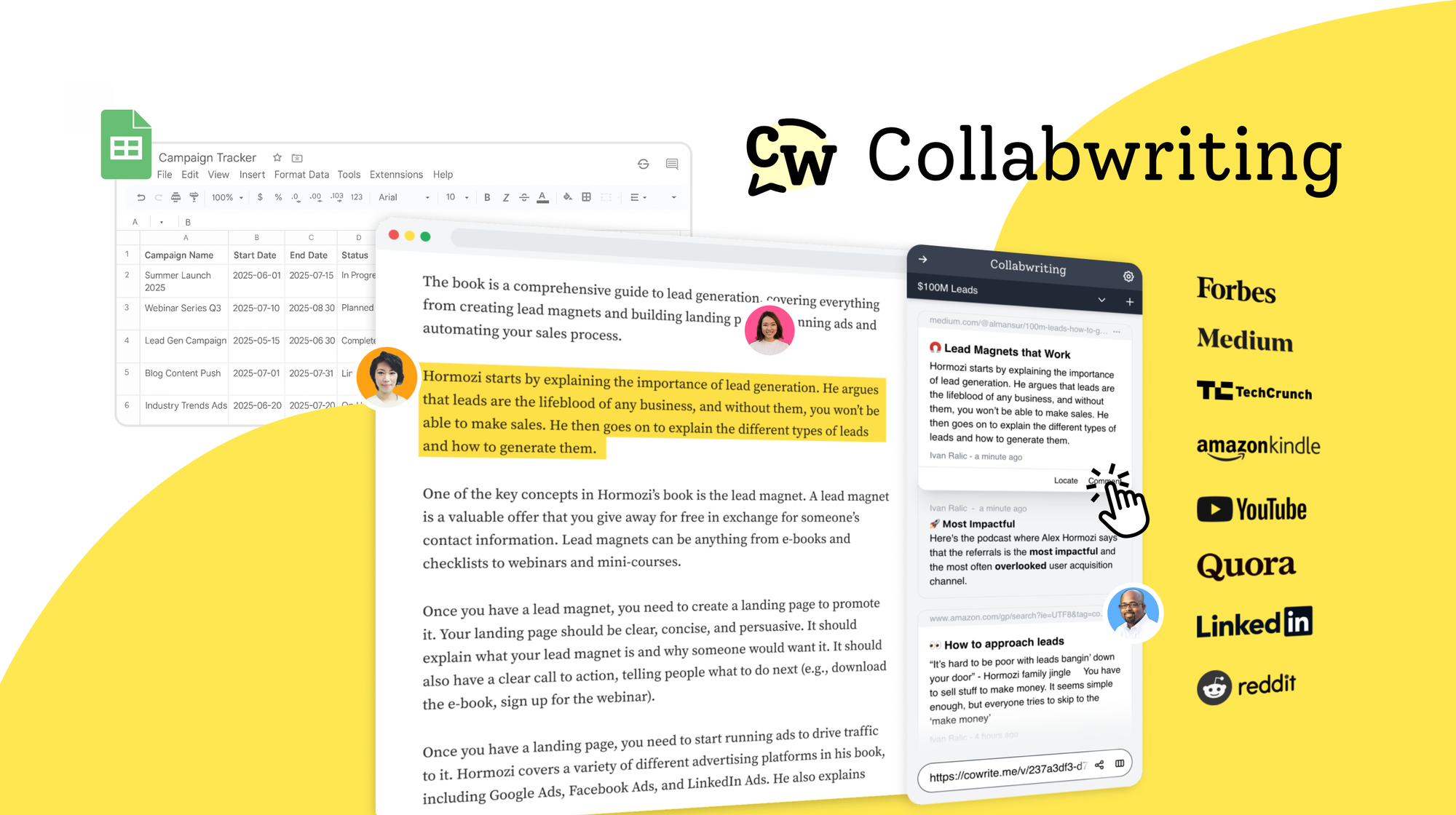It's often said that knowledge is power, but what is often left behind is the fact that its value exponentially multiplies when it's shared.
Thanks to software development, digital communication tools, and the internet, knowledge sharing has never been easier.
Knowledge management is emerging as the most important technology of 2020. According to Research and Markets, the global knowledge management market is expected to reach a value of $798.9 billion, with an average growth of 20.4%.
We can all agree that it’s challenging for organizations to maintain effective communication when the volume of information starts to increase. This is where knowledge management comes into play, helping companies organize their teams in a more collaborative way.
By linking the right knowledge management steps to the appropriate business processes, your team will have access to the knowledge they need, increased efficiency, as well as incentives to contribute their expertise.
Approaches to the process of managing knowledge
There are three approaches that companies can take when designing the knowledge management process:
- Human-centric: This approach focuses on human interactions and the learning culture that fosters information sharing.
- Process-centric: Here’s the focus on the organizational processes for sharing information and identifying where the information is stored.
- Technology-centric: With this approach, the focus is on the technology used to store and transfer knowledge.
The best knowledge management processes encompass all three. A holistic approach to knowledge management uses technology to help people follow and improve the processes.
Ways to improve information sharing
Centralize information on one platform
Nobody enjoys juggling multiple tools and platforms just to find the information they need. It’s time-consuming, confusing, and often leads to frustration when you can’t locate what you're looking for.
Plus, no one wants to bother their coworkers with questions about where to find things.
That’s why organizations must direct information to one platform in order for employees to perform their work productively.
Make sure that your employees know how to use the platform and what information needs to be on it. It's also important to enable two-way communication to make sharing and requesting information a breeze, without the usual obstacles.
Having all your critical information in one place not only simplifies access but also allows for easy data checks. This way, everyone can quickly verify that they're on track and doing what they need to do.
Promote platform adoption
Whenever you consolidate all your critical data on one platform, encourage your entire organization to use it.
It's beneficial if all team members of the organization are there and sharing information through it. When the exchange of information is done on one platform that is accessible to all, it can help others perform their tasks more successfully.
This also ensures that information gets shared across the organization instead of just sitting unused.
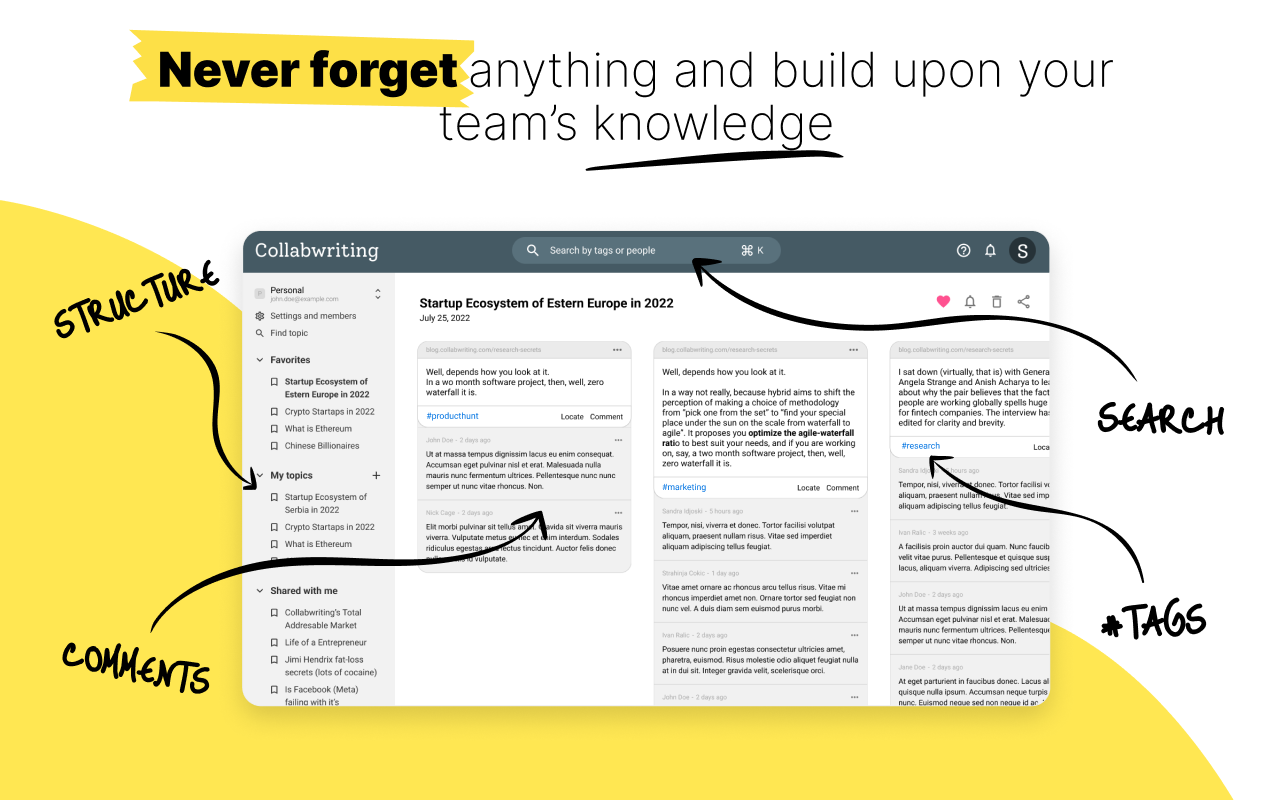
Collabwriting - Shareable Notes on Web Pages and PDFs
Collabwriting allows you to gather all your online sources in one place. Just highlight, save, and collaborate with anyone on any content you find online.
Define information
To ensure that recipients can perform the necessary tasks, it’s necessary to define what information should be shared.
By categorizing and understanding this information, the recipient can search for knowledge and contribute to it more efficiently.
Empower knowledge sharing
While knowledge sharing may seem like an elusive term, there’s a very simple definition for it:
It's the exchange of information within the organization - between team members and employees.
If we then dig a bit deeper, knowledge sharing in the workplace would represent a process of creating a space for open communication about joint successes, common problems, and plans that employees make together.
It’s implemented by organizations putting in place guidelines that streamline these knowledge-sharing exchanges and validate them by providing continuous encouragement.
Organizations that do it well have a culture of knowledge where employees are motivated to share what they know with others instead of hoarding it.
It has been evident for years how these efforts can have beneficial outcomes in many areas, both for the employees and their companies.
According to a LinkedIn report, internal hiring has increased by 19 percent since 2019. Employees who are given an opportunity for learning and get ahead internally stay twice as long as those who aren’t promoted.
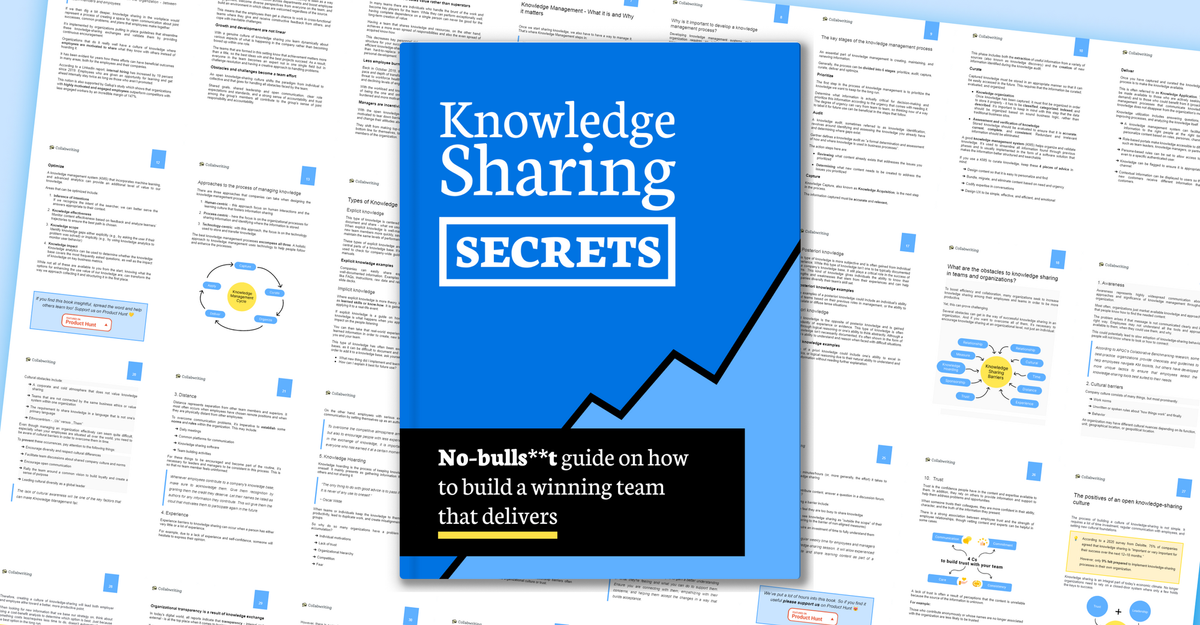
What to do next?
Different types of data may require other methods of sharing information for it to be done effectively.
Make sure standards are set in a way that benefits everyone. Before subscribing to a centralized data-sharing platform, you need to identify what kind of projects you work on and what kind of data you plan on sharing.
If you work in a team where research is the first step, you know how helpful it is to have a tool that helps you collaborate with your colleagues and work efficiently.
This is where Collabwriting comes in.







![5 Tools Marketers Use to Organize Research - Compared [2025]](/content/images/2025/11/cover-4-1.png)

![Build Credibility in Research: Smart Way to Verify Information and Track Sources Easily [2025]](/content/images/2025/10/covers-for-blog--7--1.png)
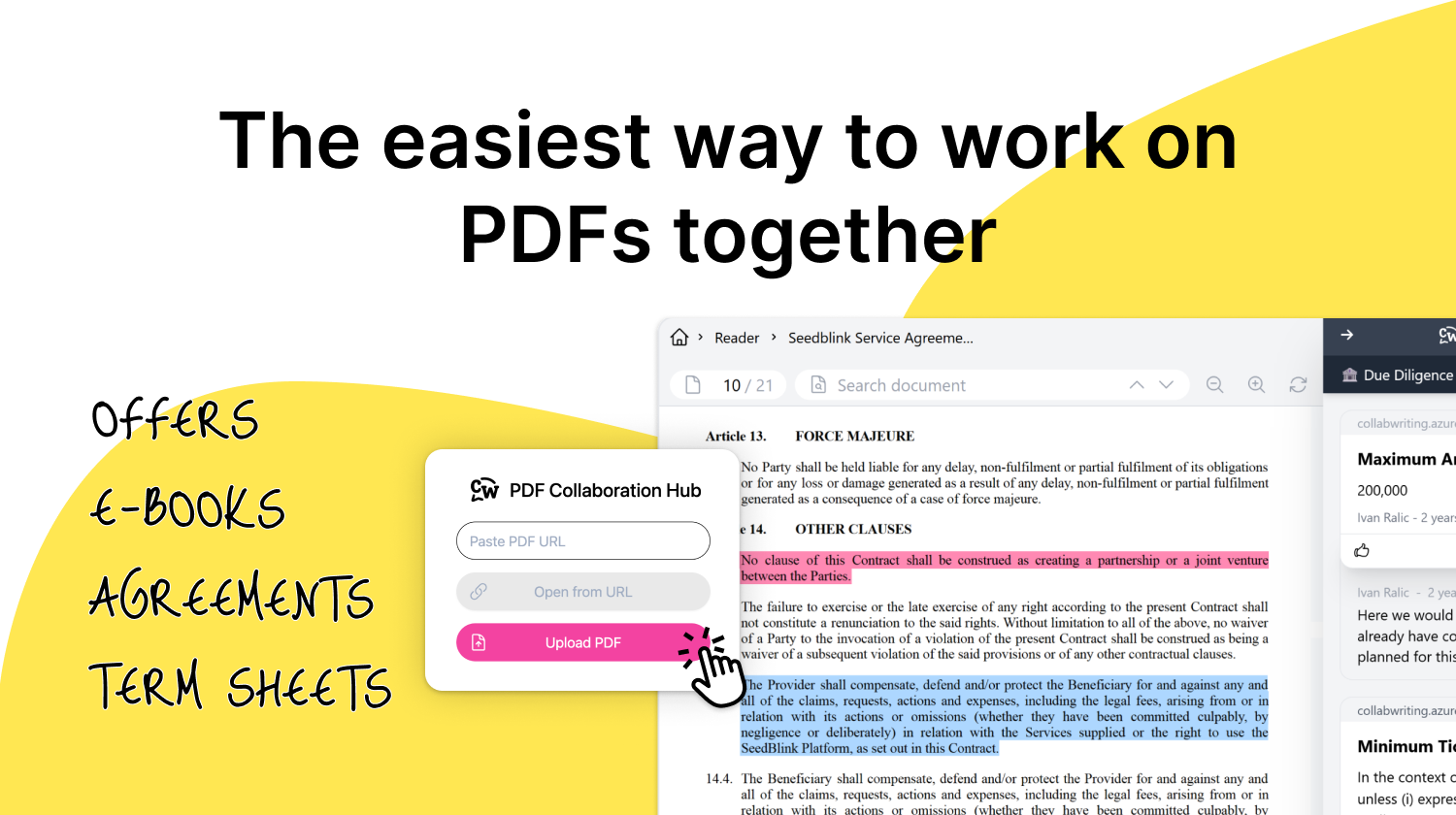
![How Marketers Can Turn LinkedIn Content into Collaborative Research [2025]](/content/images/2025/10/covers-for-blog--8-.png)
![Best Readwise Alternative for Personal & Team Research [2025]](/content/images/2025/09/Frame-814--3-.png)
